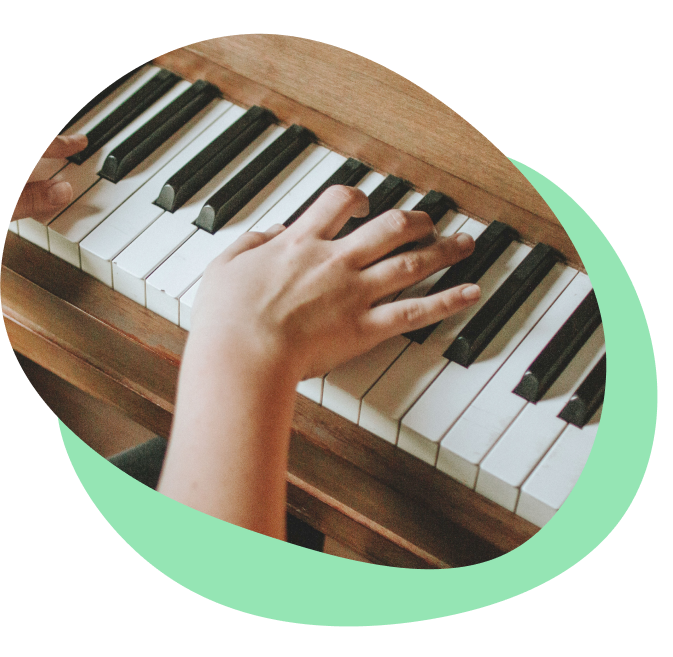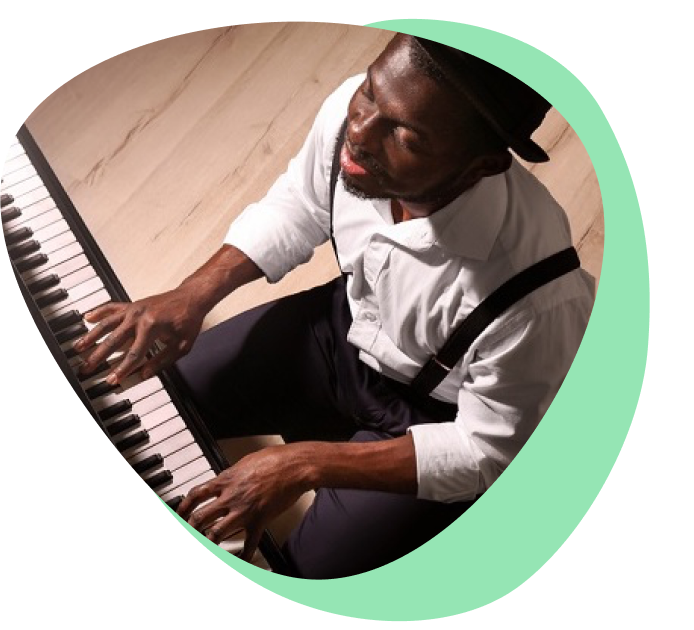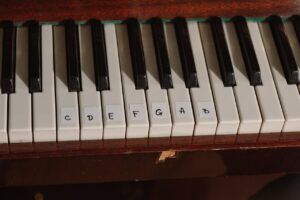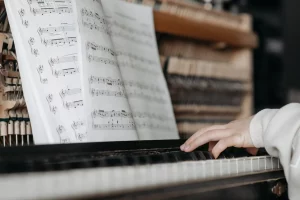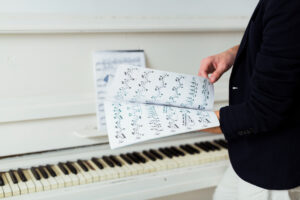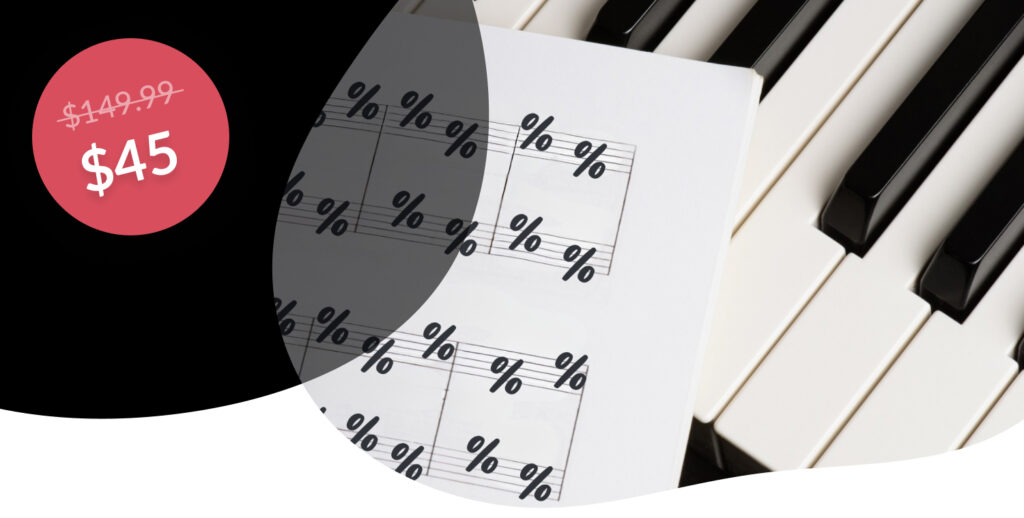The A major has a bright, positive sound that you’ll hear in everything from pop hits to classic rock anthems. Learning this chord is an important step in your musical journey. In this article we will look at how to play the A major triad, all of its inversions and what fingerings to use. Let’s dive into some A major chordal fun with some helpful diagrams, beginner friendly chord progressions and some fun songs.
How to play the A major chord in root position
To play the A major triad, you’ll need three notes: A, C# and E. Start by finding A, the white key just before the last of the three black keys. Then add C# (a black key) and E. Press them together and you’ll immediately hear the bright and open sound of the A major chord.
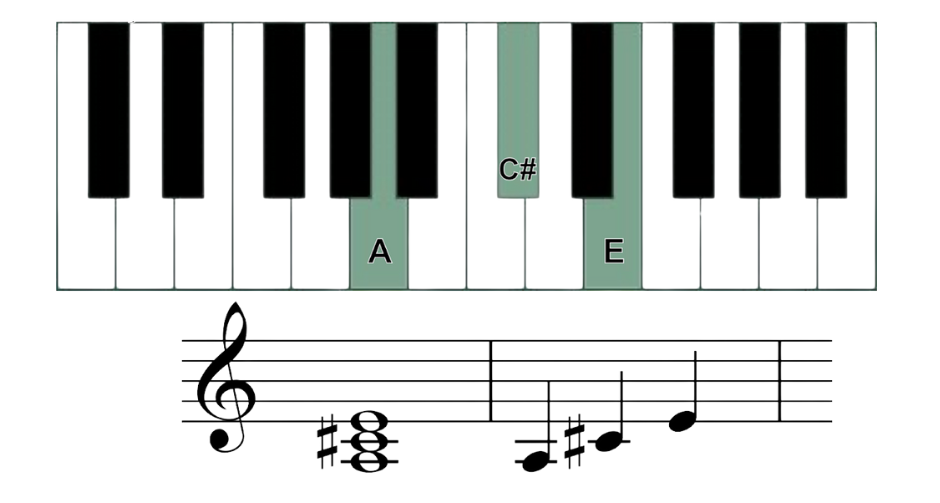
The A major chord is made up of three notes: A, C# and E
These notes are called A (the root), C# (the third), and E (the fifth). Together, they create a happy uplifting sound.
To play this chord in its root position (basic form) with your right hand, use these fingers:
- E – Fifth finger (5)
- C♯ – Third finger (3)
- A – Thumb (1)
For the left hand, use the following fingers:
- E – Thumb (1)
- C♯ – Third finger (3)
- A – Fifth finger (5)
What are the inversions of an A major chord?
The inversions of the A major chord are created by changing the order the notes are stacked. Inversions let you play the same chord with a different feel and changes how you hear each note of the chord.
How to play A major 1st inversion?
To play A major in first inversion, start with C♯ as the lowest note. Next, play E above it and add A as the highest note. This gives the chord a fresh sound great for mixing up a chord progression.
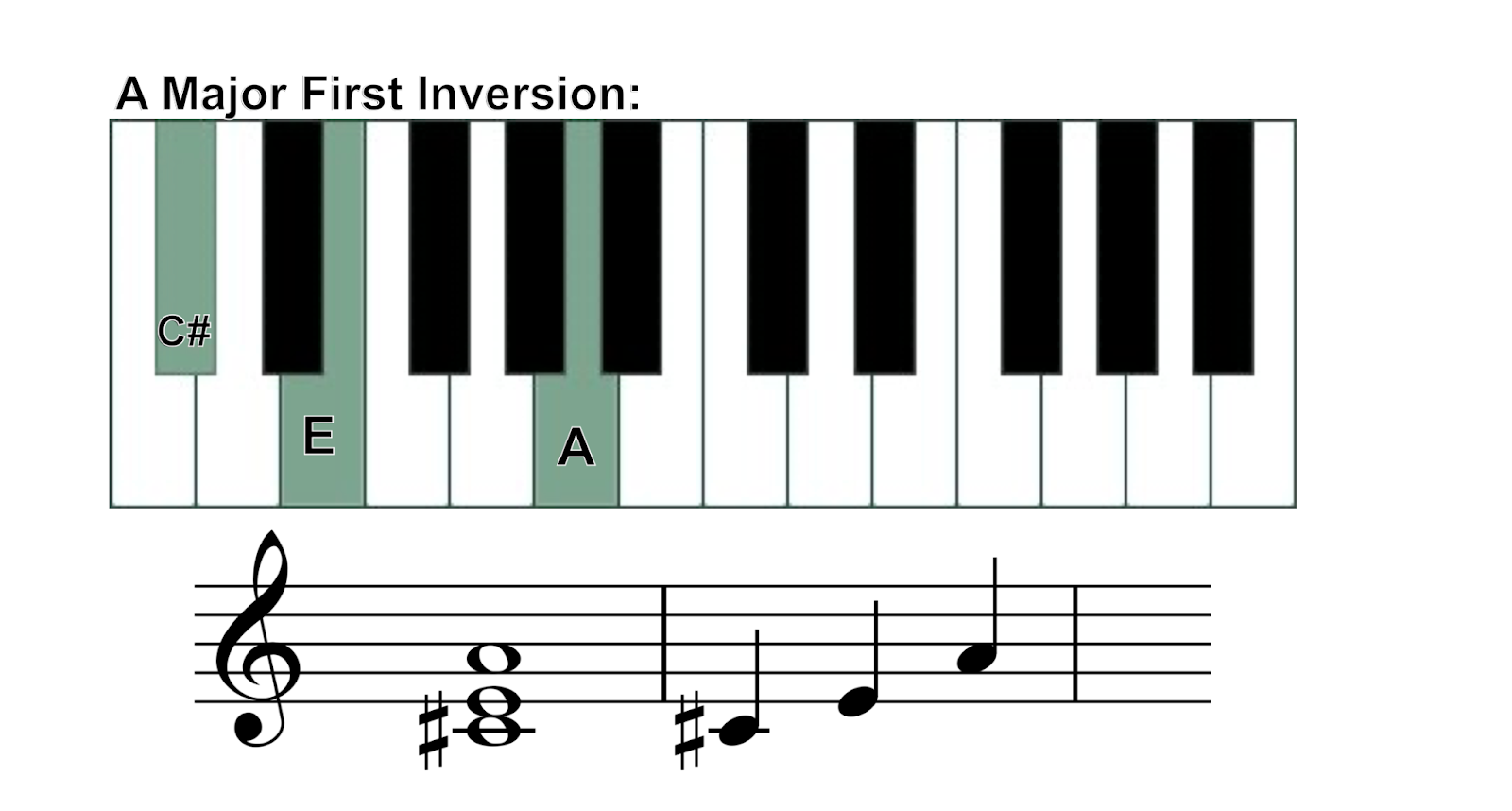
For the right hand, use these fingers:
- C♯ – Thumb (1)
- E – Middle finger (3)
- A – Fifth finger (5)
For the left hand, use these fingers:
- C♯ – Fifth finger (5)
- E – Third finger (3)
- A – Thumb (1)
How to play A major 2nd inversion?
To play A major in second inversion, start with E as the low note. Then play an A above that and finally add C♯ as the highest note. This inversion is ideal for creating a sense of resolution in your chord progressions.
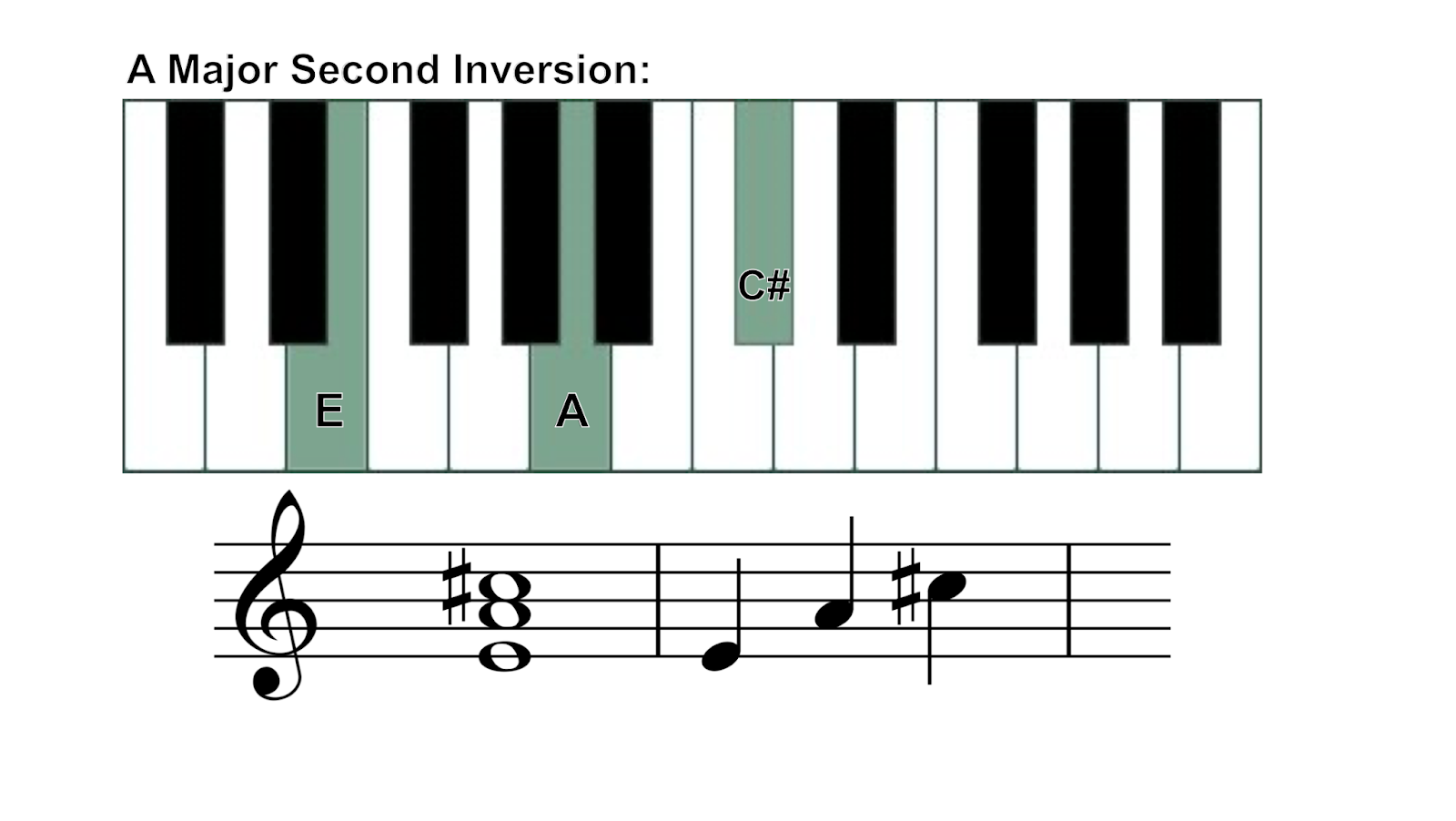
For the right hand, use these fingers:
- E – Thumb (1)
- A – Middle finger (3)
- C♯ – Fifth finger (5)
For the left hand, use these fingers:
- E – Fifth finger (5)
- A – Third finger (3)
- C♯ – Thumb (1)
Common chords progressions in the key of A major
A major chord progressions are widely used in rock, pop, jazz and classical music. An A major chord sequence often uses chords like A, D, E and F#m. Here are some popular A major chord progressions:
- A – F#m – D – E
- A – E – D – F#m
- A – C#m – D – Bm
- A – D – E – F#m
These beginner friendly chord sequences are a great way to put your knowledge of piano chords to the test. To understand chord symbols and how to play them, try Skoove’s tailor-made beginner chord progression courses.
Popular songs to play with the A major chord
The A major chord is used in many well-known songs across different genres. Here are a few popular tracks where you can hear this chord in action.
Maroon 5 – Don’t Wanna Know
The Beatles – Here Comes The Sun
Piano chords generator
💡 If you are reading this from a mobile device, rotate it to display the tool in full width.
1. Click on “Chords”
2. Choose the “Root” of the chord
3. Choose the “Chord qualities” (major, minor, etc.)
4. Click “Display”
Author of this blog post:
Matthew Dickman

With over a decade of experience in music education Matthew holds a BA in Music from Paul McCartney’s LIPA and an MA in Composition from the University of Salford. Mathew has developed a distinctive compositional voice and approach to music theory education through his research and work in the music industry. Matthew’s writing for Skoove combines experience from orchestral and media composition, and as a gigging jazz musician, to create a wholistic and accessible pedagogy for musicians of any level. Away from music, he enjoys reading and exploring nature to expand his horizons and knowledge contributing to his holistic teaching style.




